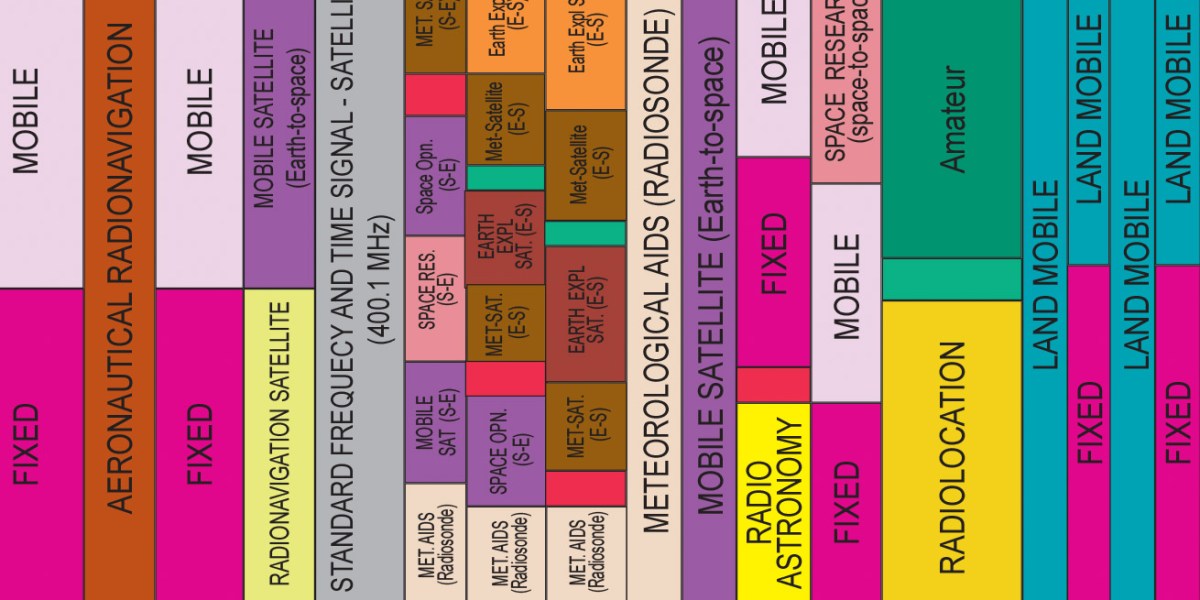
The US government lays claim to a large chunk of spectrum for military use, communications, and transportation. FM radio operates between 88 and 108.0 MHz, and AM radio operates between 540 and 1700 kilohertz. Using licenses, amateur radio operators are granted slices where they can communicate safely, as are businesses and other institutions. Civil aviation, maritime navigation, satellite communications, radio astronomy, cellular voice, and data all lay claim to colorful plots on this chart.
The chart uses 33 color-coded categories to visualize the information in a crazy quilt of blocks (some wide, some narrow), spread from 9 kHz (very low frequency) all the way to 300 GHz (extremely high frequency). It does suffer from scale distortions, not unlike a map of Earth.
Eric Rosenberg, a telecommunications specialist at NTIA, says a lot of the choices about what service goes where come down to physics and the environment where the service will be used: “You can’t just pick up a block and say, okay, we’re gonna move these radars over here.”
The chart is always extremely popular, Rosenberg says; fans include lawmakers in Congress. Last updated in 2016, it is due for another revision. “We’re getting to the point where we really feel that we need to redo it,” he says. “Again, it’s a very large project.” ν
A version of this story appeared on Beautiful Public Data (beautifulpublicdata.com), a newsletter by Jon Keegan (KE3GAN).
